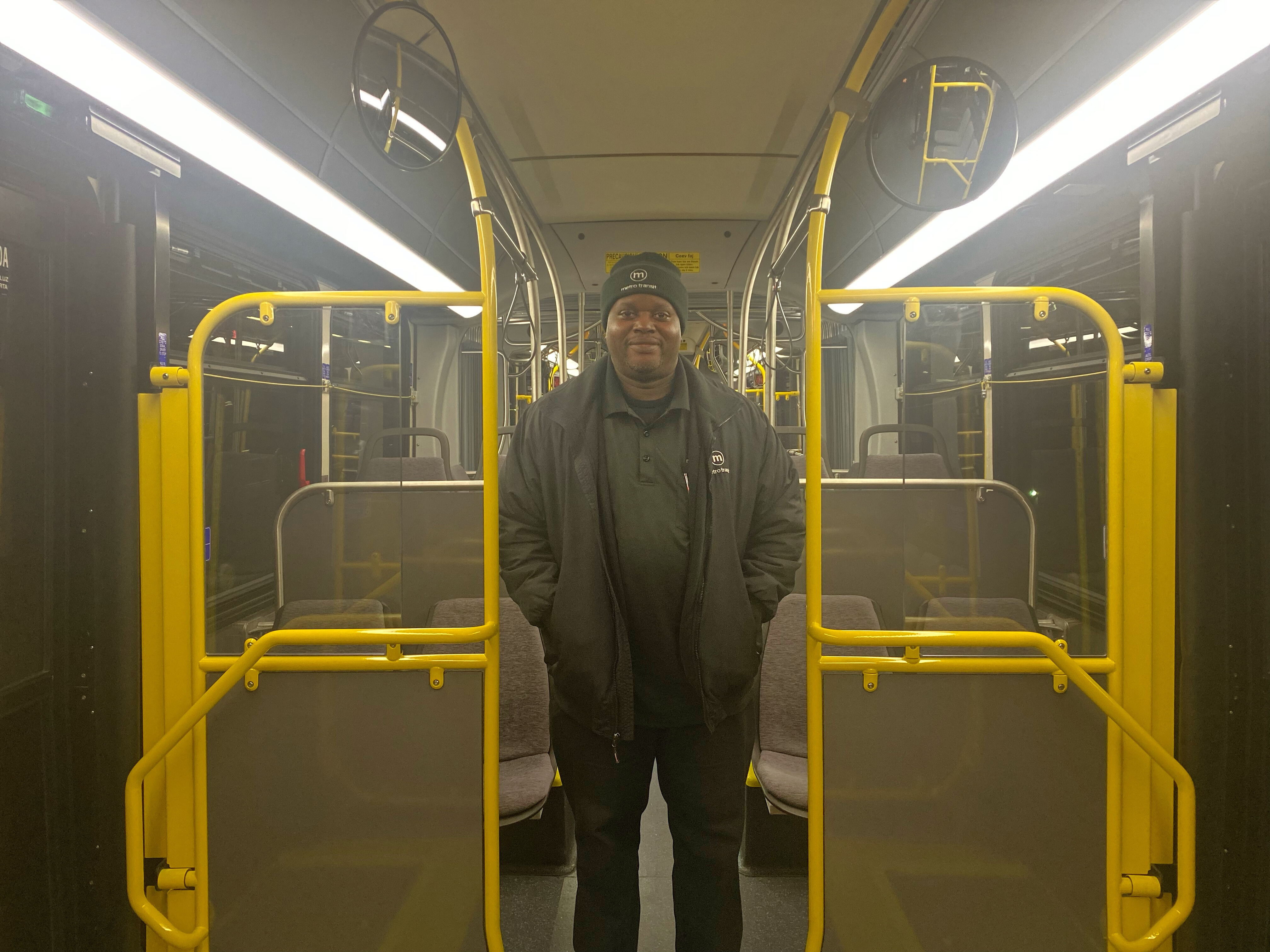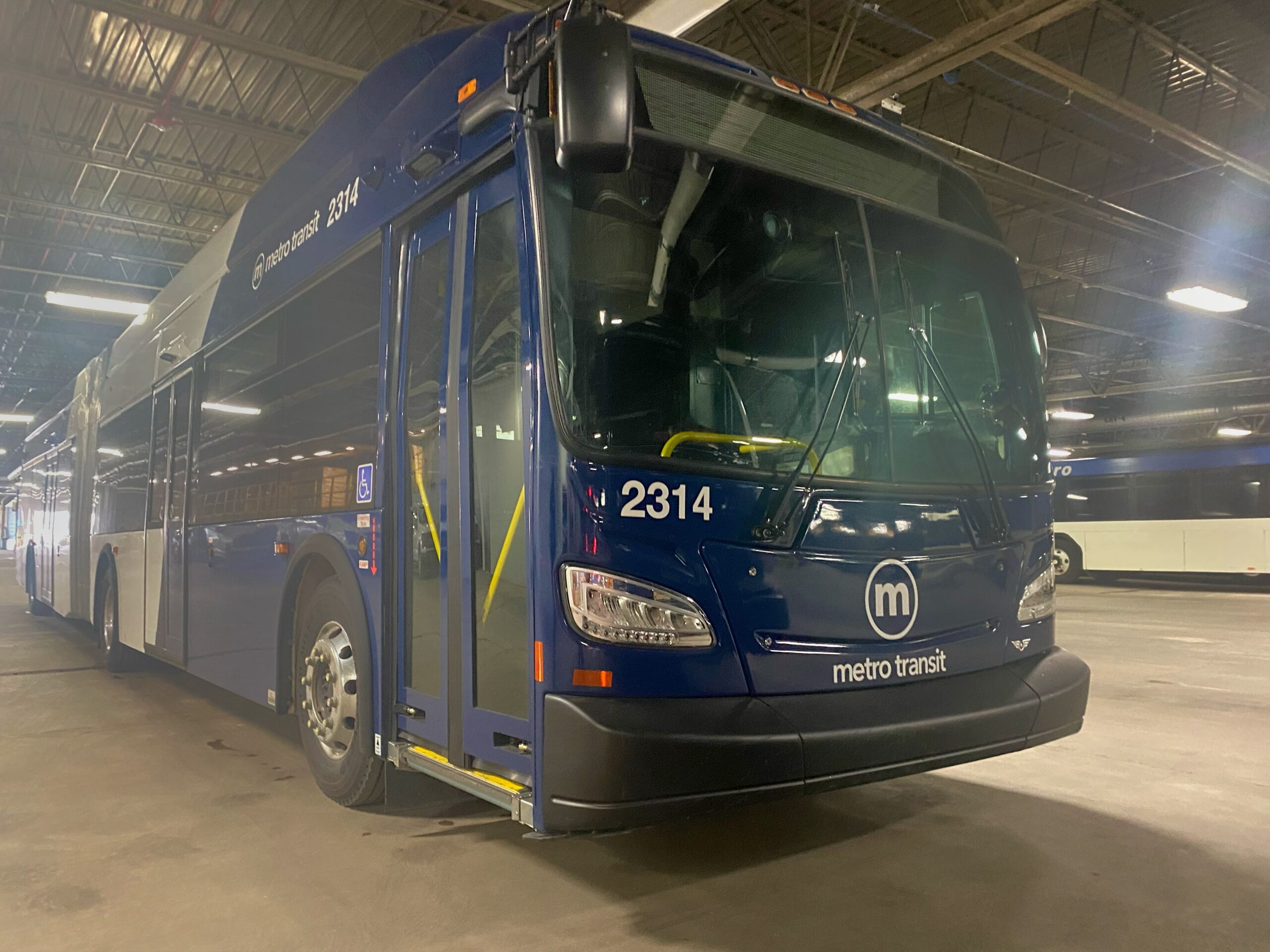Within the next 12 months, the City of Madison plans to transition about a third of its 192-bus fleet to all-electric buses, a feat made possible through funding from the Bipartisan Infrastructure Law (BIL). The transition is expected to improve riders’ experiences while maintaining overall services.
The new 60-foot buses, manufactured by New Flyer, boast a range of 152 miles and will be supported by charging station infrastructure installed at the end of each route. Riders can expect a quieter, emission-free ride without an increase in bus fare.
“Ultimately, what we wanted to make sure what happened was that the transition to electric did not impact service quality by limiting range or increasing downtime,” said Justin Stuehrenberg, City of Madison Metro Transit General Manager.
The drivers, the people making sure the buses get where they’re going, will also experience an upgrade in their experience with the buses. While training with the buses, drivers have quickly learned how to handle the additional length of 60-foot buses.
“It just took like two turns for me to get used to it, our brains are thinking this is a 60-foot bus, so I need to turn a little bit different,” said Nicodemus Braxton, Transit Operator and Operator Instructor. “I was really wide in those first two turns. I didn’t have to make the turns that wide, I could just make it like it’s a 40-foot bus. Actually, it turns a little bit better because it’s 30 feet and then 30 feet. You’re really just worried about the first 30 feet.”
Braxton noted that the drivers he has trained all had similar experiences, and many appreciate the upgrades that come with the new buses. Additional features like a quiet ride, brake interlock, and wheelchair securement system, to name a few, will improve the level of comfort and safety for riders and drivers alike.

Nicodemus Braxton on one of the new electric buses.
“The brake interlock is going to be really good for us,” Braxton said. He explained that the interlock, engaged by holding the brake for two seconds, locks the brakes, which will help drivers keep the bus in place on hills and prevent driver fatigue.
The new wheelchair securement system, known as Qstraint, will also make it easier for those using wheelchairs or other mobility devices to safely seat themselves on the bus without much assistance from the driver. This will help to give riders who use such devices more autonomy during their commutes.
Additional enhancements include a more spacious interior, the ability to enter the buses from any of their five doors, and interior bike storage.
These upgrades are all thanks to the $75 million in federal funding the city received through BIL and the FAST Act, which covered about 80% of the cost of the 62 electric buses. More than $48 million of those funds came through the Federal Transit Administration’s (FTA) Grants for Buses and Bus Facilities Program between 2020-2023. The program makes competitive grants available to states and direct recipients like the City of Madison for the purpose of purchasing, replacing, or rehabilitating buses and bus infrastructure, including changes and innovations focused on low and no-emission vehicles.
“46 of them (buses) are funded through the bus rapid transit project, which is federally funded,” Stuehrenberg said. “It’s an infrastructure project that also includes the buses, and so we were able to leverage the money we already had programmed for bus replacement…”
In 2023, the city was awarded $37.9 million through the Grants for Buses and Bus Facilities Program, which paid for an additional 16 buses. Those 16 buses are meant to support high ridership routes along the university and campus area and some of the routes out to EPIC Systems in Verona.
These 62 buses were almost completely paid for through grants and will help the city save on fuel costs and, eventually, maintenance costs. The upfront costs of training staff as well as purchasing new tools and parts will cause an initial delay in costs savings from reduced maintenance, but a reduction in oil changes and other service work will ultimately save the city money.
In the meantime, the city continues to capitalize on the available BIL funding and has again applied for a grant in hopes of adding another 15 electric buses to its fleet. Earlier this year the FTA announced the availability of $1.5 billion in funding for the Grants for Buses and Bus Facilities Program.
Electric buses may eventually be implemented on lower-frequency routes, once expected improvements to electric buse technology arrive on the market. This will allow for buses that can run full routes without the need for on-route charging infrastructure.
“Our hope is that over the next couple years is there will finally be a bus that can get through an entire day’s cycle on a single charge, and we won’t need to build those charging facilities,” Stuehrenberg said. “For now, our expectation is that these 62 will be the extent of what we can do with these high-frequency routes.”
Stuehrenberg noted that the city is considering adding additional hybrid buses to service the low-frequency routes.

